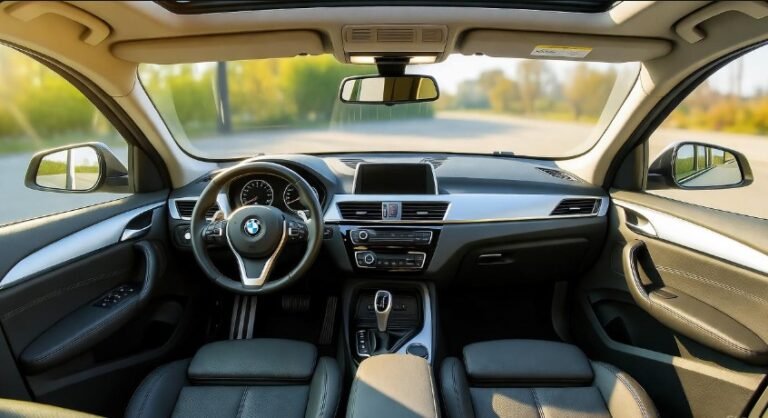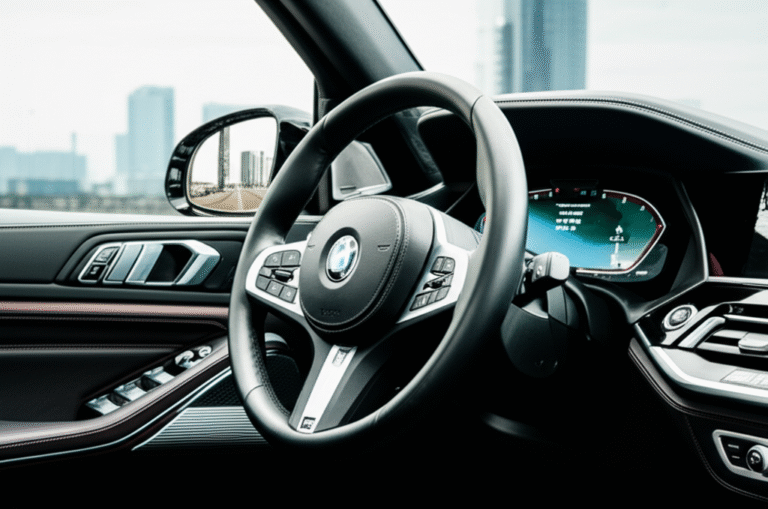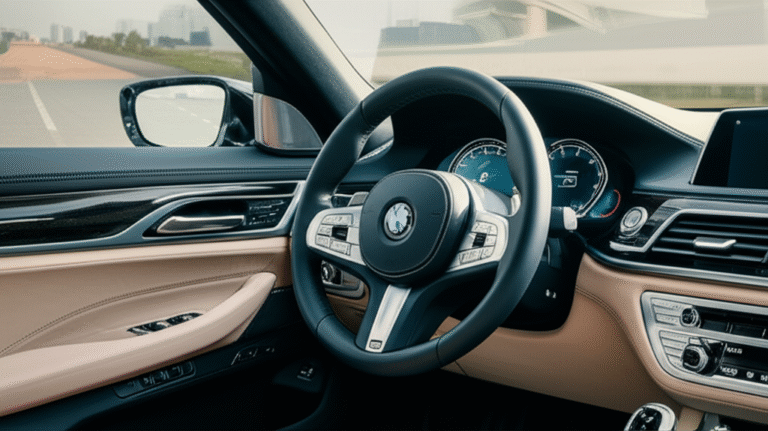RFT Tyres for BMW: 6 Must-Have Specs
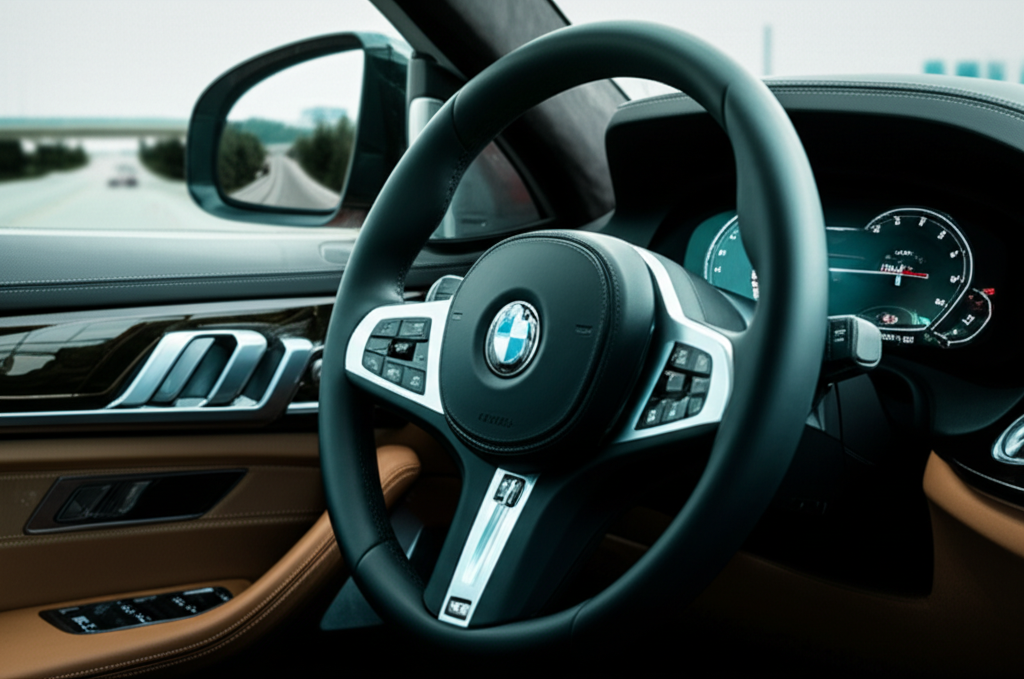
For your BMW, selecting the right RFT (Run-Flat Tyre) involves understanding six critical specifications. Choosing RFT tyres for BMW with the correct specs ensures safety, performance, and a smooth ride, allowing you to drive confidently even after a puncture.
Key Takeaways
- Identify your BMW’s required tyre size.
- Understand RFT load and speed ratings.
- Verify BMW’s OEM RFT approval.
- Check tread pattern for grip and noise.
- Consider fuel efficiency ratings.
- Confirm RFT pressure monitoring system compatibility.
Driving a BMW is an experience in itself. It’s about precision engineering, exhilarating performance, and a connection to the road that few cars can match. To maintain this, the tyres are absolutely crucial. When it comes to RFT tyres for BMW, choosing the right ones can seem daunting. You want to ensure you get the perfect blend of safety, comfort, and performance. This guide will break down the 6 must-have specifications every BMW owner needs to know when selecting RFT tyres. We’ll make it simple, so you can drive with confidence, knowing you’ve made the best choice for your ultimate driving machine.
What Are RFT Tyres for BMW?
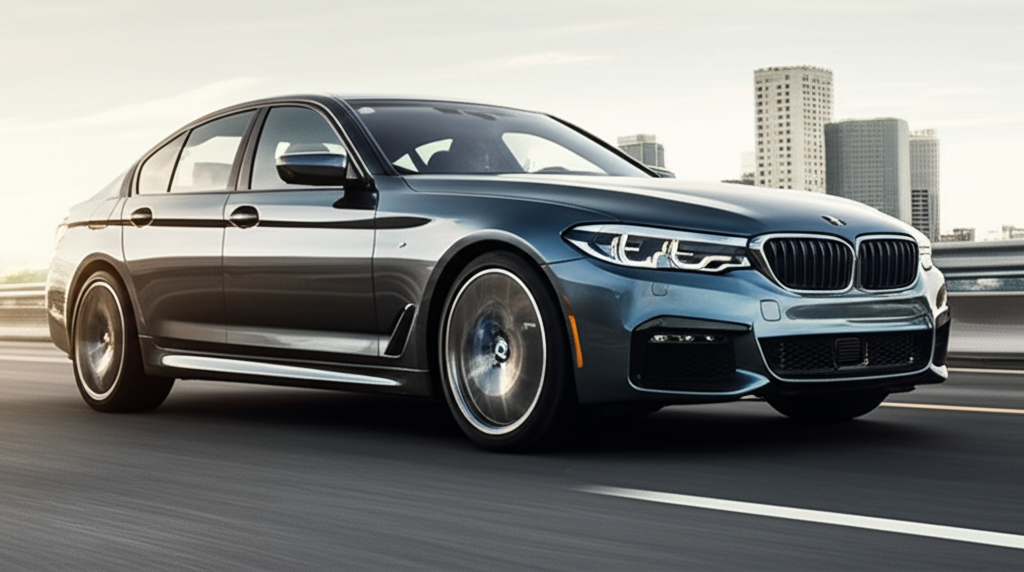
Run-Flat Tyres (RFTs) are designed to allow you to continue driving for a limited distance at a reduced speed, even after a complete loss of air pressure. This is a significant safety feature, especially on longer journeys or when you’re far from a repair shop. BMW has been a pioneer in fitting RFTs as standard equipment on many of its models, recognizing the benefits they offer in terms of convenience and safety. Unlike conventional tyres, RFTs have reinforced sidewalls that can support the vehicle’s weight without air. This means you don’t have to stop immediately and change a flat tyre in potentially unsafe conditions. Instead, you can safely reach a service station to have the tyre inspected or replaced.
The technology behind RFTs has advanced considerably over the years. Early versions could sometimes compromise ride comfort, but modern RFTs offer a much more refined driving experience, often indistinguishable from non-RFT tyres for many drivers. BMW works closely with tyre manufacturers to develop RFTs that meet their specific performance and handling requirements, ensuring that the driving dynamics of their vehicles are preserved.
The 6 Must-Have Specs for RFT Tyres for BMW
When you’re looking to replace or upgrade the tyres on your BMW, especially if they are RFTs, paying attention to specific details is paramount. These aren’t just random numbers; they are dialed-in specifications that affect your car’s safety, handling, and overall driving experience. Let’s dive into the 6 essential specs you absolutely need to consider for your RFT tyres for BMW.
1. Tyre Size: The Foundation of Fitment
This is arguably the most crucial specification. The tyre size must match what your BMW was designed for. Mismatching tyre sizes can lead to speedometer inaccuracies, affect the traction control and ABS systems, and even damage your vehicle’s drivetrain. You’ll typically find the recommended tyre size on a sticker located on the driver’s side doorjamb, glove compartment, or inside the fuel filler door. It’s also listed in your vehicle’s owner’s manual.
A typical tyre size designation looks something like this: 225/45R17 91W.
- 225: This is the tyre’s width in millimeters from sidewall to sidewall.
- 45: This is the aspect ratio, representing the tyre’s sidewall height as a percentage of its width. In this case, the sidewall height is 45% of 225mm.
- R: This indicates the tyre’s construction. ‘R’ stands for Radial construction, which is standard for modern tyres, including RFTs.
- 17: This is the diameter of the wheel rim in inches that the tyre is designed to fit.
Ensuring this exact size is fitted is non-negotiable. Always refer to your BMW’s specific recommendations.
2. Load Index: Carrying Capacity Matters
The load index is a numerical code that indicates the maximum weight each tyre can support when inflated to its recommended pressure. It’s vital that the load index of your new RFT tyres meets or exceeds the original equipment (OE) specification for your BMW. Overloading your tyres is dangerous and can lead to tyre failure, especially at higher speeds. The load index is usually found near the tyre size on the sidewall.
Here’s a quick look at some common load index values:
| Load Index | Load Capacity (lbs) | Load Capacity (kg) |
|---|---|---|
| 88 | 1235 | 560 |
| 89 | 1279 | 580 |
| 90 | 1323 | 600 |
| 91 | 1356 | 615 |
| 92 | 1389 | 630 |
| 93 | 1433 | 650 |
| 94 | 1477 | 670 |
You can find detailed tables online that correlate load index numbers to their respective weight capacities. For example, a load index of 91 supports approximately 1356 lbs (615 kg) per tyre. Always confirm the required load index for your specific BMW model, as it varies based on the vehicle’s weight and distribution.
3. Speed Rating: Keeping Up with Performance
The speed rating indicates the maximum speed at which a tyre can carry a load corresponding to its load index. Just like the load index, the speed rating on your RFT tyres for BMW should meet or exceed the manufacturer’s original specification. BMWs are built for performance, and their tyres need to be able to handle the speeds they are capable of reaching safely. Exceeding a tyre’s speed rating can lead to overheating and catastrophic failure.
The speed rating is represented by a letter at the end of the tyre size designation (e.g., ‘W’ in 225/45R17 91W).
Here are some common speed ratings and their corresponding maximum speeds:
| Speed Symbol | Max Speed (mph) | Max Speed (km/h) |
|---|---|---|
| H | 130 | 210 |
| V | 149 | 240 |
| W | 168 | 270 |
| Y | 186 | 300 |
For high-performance BMW models, you’ll often see high-speed ratings like ‘V’ or ‘W’. Using a tyre with a lower speed rating than recommended can compromise the vehicle’s handling characteristics and safety at higher speeds.
4. BMW’s OE (Original Equipment) Approval & Star Marking
BMW has a rigorous process for approving tyres for its vehicles to ensure they meet specific performance, handling, and safety standards. Tyres that have been specifically tested and approved by BMW for a particular model will often carry a ‘star’ marking (★) symbol on the sidewall. This indicates that the tyre has passed BMW’s stringent tests and is considered an Original Equipment (OE) fitment.
When choosing RFT tyres for your BMW, always look for these star-marked tyres if available. They are engineered to work harmoniously with your BMW’s suspension, steering, and electronic systems (like DSC – Dynamic Stability Control). While you might be able to fit a non-OE approved tyre of the correct size, load, and speed rating, you may not achieve the same level of performance, comfort, or safety that BMW intended.
Why is this so important? BMW engineers spend countless hours testing and calibrating their vehicles with specific tyres. The star marking signifies that the tyre has met these exacting standards, ensuring optimal grip, braking, handling, and ride quality tailored to your BMW. It’s the manufacturer’s seal of approval for a perfect match.
5. Tread Pattern and Compound: Grip and Durability
The tread pattern and the rubber compound used in RFT tyres for BMW play a significant role in their performance across various conditions, as well as their lifespan and noise levels. BMW vehicles often require tyres that can handle high torque and provide excellent grip, whether you’re accelerating on a dry highway or navigating wet city streets.
- Asymmetrical Tread: Many performance-oriented RFTs feature an asymmetrical tread pattern. This means the inner and outer sides of the tread are designed differently. The outer shoulder typically has larger, stiffer blocks to provide excellent cornering grip, while the inner side is optimized for water evacuation and stability. This design helps maintain performance without sacrificing ride comfort or increasing noise.
- Symmetrical Tread: While less common on high-performance BMWs, symmetrical patterns offer good all-around performance and can be rotated freely.
- Directional Tread: These often have a V-shaped pattern designed for excellent water dispersal and high-speed stability, making them a popular choice for performance vehicles in wet climates.
- Rubber Compound: The compound affects grip, wear, and fuel efficiency. ‘Summer’ compounds are designed for optimal performance in warm conditions, offering excellent dry and wet grip but performing poorly in freezing temperatures. ‘All-season’ compounds offer a compromise, providing reasonable performance across a wider temperature range but often not excelling in extreme heat or cold. For RFT tyres for BMW, the compound is crucial for balancing grip, wear life, and the specific demands of run-flat technology, which can generate more heat.
Consider your typical driving conditions. If you encounter frequent rain, a pattern designed for superior water evacuation is key. If you drive in varied climates, an all-season compound might be more practical, though it might slightly compromise peak performance in ideal conditions.
6. Run-Flat Technology Specifics & TPMS Compatibility
Not all run-flat technologies are identical. While the core principle of reinforced sidewalls remains, manufacturers employ different methods to achieve this. It’s important to understand the specific RFT technology used by the tyre and ensure it’s compatible with your BMW’s Tyre Pressure Monitoring System (TPMS).
Modern BMWs are equipped with sophisticated TPMS that alerts you if a tyre’s pressure drops significantly. RFTs rely on this system because a driver might not feel a puncture immediately due to the reinforced sidewall. The tyre needs to be designed to communicate correctly with the TPMS sensors.
When purchasing RFT tyres for BMW, confirm that they are designed to work with a TPMS. Most OE-approved RFTs will be inherently compatible. If you’re unsure, always consult with a tyre professional or refer to your BMW’s manual. The technology used can also affect the ride quality and durability of the run-flat capability. Some RFTs use reinforced rubber inserts, while others use self-supporting sidewalls. The ‘self-supporting’ type is generally considered more comfortable.
Pro Tip: Always ensure your TPMS is functioning correctly. It’s your first line of defense when using run-flat tyres, providing crucial early warnings of pressure loss.
Why These Specs Matter for Your BMW
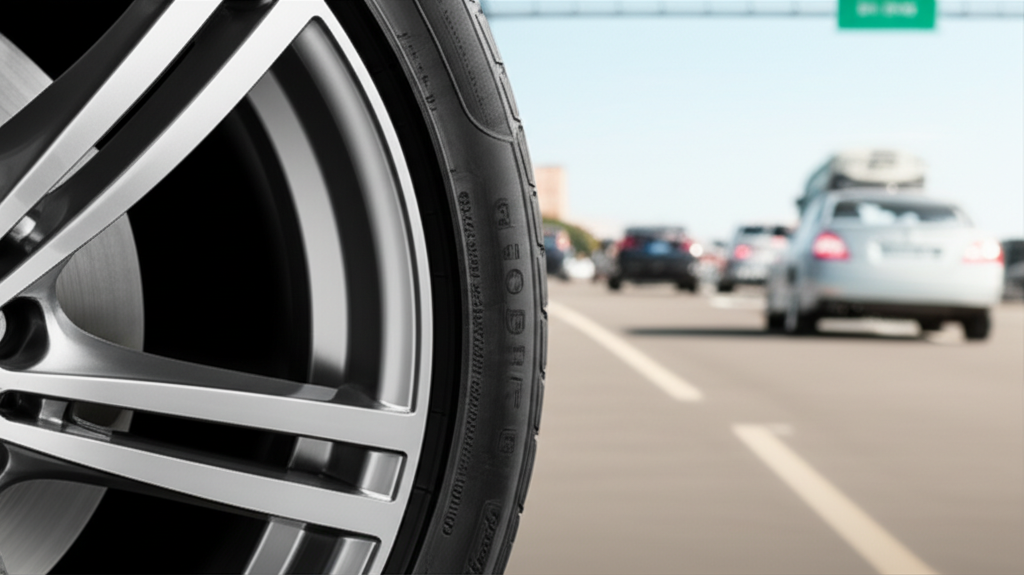
Choosing RFT tyres for BMW based on these specifications isn’t just about selecting a set of rubber circles. It’s about maintaining the integrity of a finely tuned driving machine. Here’s why each spec is so important:
- Safety First: Correct size, load, and speed ratings prevent dangerous tyre failures, especially at speed or under load. BMWs are engineered for high performance, and ignoring these ratings can compromise your safety and that of others on the road.
- Optimal Performance: OE-approved tyres with specific tread patterns and compounds ensure your BMW handles as intended. This means precise steering, excellent braking, stable cornering, and a responsive feel that is characteristic of the brand.
- Longevity and Durability: Using the correct RFT tyres that match your driving style and conditions can lead to longer tyre life and more consistent performance over time. This also applies to the run-flat capability itself – ensuring it performs as expected when you need it most.
- Vehicle System Integration: Modern vehicles like BMWs have complex electronic systems. Tyres are a critical component of these systems. Using OE-spec tyres ensures compatibility with ABS, traction control, stability control, and TPMS, allowing these systems to function accurately.
- Ride Comfort and NVH (Noise, Vibration, Harshness): While RFTs have historically been associated with a firmer ride, advancements in technology and BMW’s specific approvals aim to minimize compromises. Choosing the right RFT tyres for your BMW model can help preserve the refined and comfortable ride you expect.
Think of it this way: you wouldn’t put a standard engine oil in a high-performance supercar and expect optimal results, right? The same principle applies to your tyres. They are the only contact point between your vehicle and the road.
RFT Tyres for BMW: A Comparative Look
Not all RFTs are created equal, and different tyre manufacturers offer various technologies. BMW often partners with major tyre brands like Michelin, Pirelli, Bridgestone, and Continental to develop OE-approved RFTs. While all aim to provide the run-flat capability, there can be subtle differences in ride comfort, noise levels, and tread wear.
Here’s a general comparison of what you might find:
| Manufacturer | Common RFT Technology Name | General Characteristics | Typical BMW Fitment |
|---|---|---|---|
| Michelin | Zero Pressure (ZP) / Run Flat Technology (RFT) | Often praised for excellent ride comfort and quietness for an RFT, good all-around performance. | Various BMW models, often performance-oriented sizes. |
| Pirelli | Run Flat System (RFS) | Known for sporty handling and strong grip, can sometimes be firmer in ride. | Performance BMW models, M series. |
| Bridgestone | DriveGuard | Focus on durability and comfort, aims to reduce the harshness often associated with RFTs. | Wide range of BMW models, including sedans and SUVs. |
| Continental | ContiSilent / SSR (Self Supporting Run-flat) | SSR offers the reinforced sidewall, while ContiSilent is a foam insert to reduce noise. Often a good balance of performance and comfort. | Common on many BMW sedans and coupes. |
When selecting RFT tyres for BMW, checking reviews specifically for your BMW model and the tyre in question can be very helpful. Pay attention to comments regarding ride quality, noise, and wet grip, as these are key areas where drivers notice differences.
Tread Life and Fuel Efficiency Considerations
While safety and performance are paramount, practical considerations like tread life and fuel efficiency also play a role in choosing RFT tyres for BMW. Run-flat tyres, due to their reinforced construction, can sometimes be heavier than their non-run-flat counterparts. This added weight can potentially have a minor impact on fuel economy. However, modern tyre design and materials are constantly improving in this regard.
Tread Life: The longevity of a tyre is often indicated by its Treadwear rating, part of the Uniform Tire Quality Grading (UTQG) system. A higher number (e.g., 400, 500) generally suggests a tyre that will last longer. However, this rating is relative and doesn’t account for the specific performance demands of a BMW. For RFT tyres for BMW, especially those focused on high performance, treadwear might be lower to achieve superior grip. Always consider the manufacturer’s estimated mileage if available.
Fuel Efficiency: Look for tyres with lower rolling resistance. This is often indicated by a tyre’s construction and the rubber compound used. Some tyre manufacturers provide fuel efficiency ratings or a ‘rolling resistance’ score. While a slight difference might seem small, over the lifetime of the tyres and thousands of miles driven, it can add up. For the most fuel-efficient RFT tyres for BMW, look for those designed with advanced compounds and aerodynamic sidewalls.
It’s often a balancing act. You might sacrifice a bit of fuel efficiency for superior grip and performance, or opt for a tyre that offers a good compromise for everyday driving.
Where to Find RFT Tyre Information for Your BMW
Getting the right information is key to making informed decisions. Here are the best places to look when seeking RFT tyres for BMW:
- Your BMW Owner’s Manual: This is the definitive source for your vehicle’s specifications, including tyre size, load index, and speed rating.
- Driver’s Side Doorjamb Sticker: Most vehicles have a sticker here with tyre pressure information and recommended tyre sizes.
- Online Tyre Retailers: Reputable online stores often have tools where you can input your BMW’s make, model, and year to see compatible RFT tyres. They usually list all the critical specifications.
- Tyre Manufacturer Websites: Major brands like Michelin, Pirelli, Bridgestone, and Continental have detailed product pages for their RFTs, often indicating OE fitments and performance characteristics.
- BMW Dealerships: While they will primarily offer OE-spec parts, they can be a valuable source of information on what tyres are recommended for your specific model.
- Automotive Forums & Enthusiast Groups: While not official sources, BMW owner forums can provide real-world feedback from other owners who have used specific RFT tyres on their vehicles. However, always cross-reference this with official specifications.
Remember to always double-check that any RFT tyres you are considering for your BMW are explicitly marked as OE-approved with a star symbol if that is your preference and available for your model.
Frequently Asked Questions (FAQs)
Q1: Can I mix RFT and non-RFT tyres on my BMW?
It is generally not recommended to mix RFT and non-RFT tyres on the same vehicle, and especially not on the same axle. The different handling characteristics and weight distribution can negatively affect your BMW’s stability control systems and overall safety. Always equip all four wheels with either RFT or non-RFT tyres from the same axle.
Q2: Do RFT tyres for BMW wear out faster?
RFTs can sometimes wear slightly faster than comparable non-RFT tyres due to their stiffer construction and the increased heat they can generate. However, advancements in tyre technology have significantly reduced this difference, and for many drivers, the wear rate is comparable, especially with OE-approved tyres.
Q3: How do I know if my BMW has RFTs installed?
The easiest way is to check the sidewall of your current tyres for markings like “RFT,” “Run-Flat,” “ZP” (Zero Pressure), “SSR” (Self-Supporting Run-flat), or a manufacturer-specific designation. Also, BMWs equipped with RFTs typically do not come with a spare tyre or a tyre repair kit.
Q4: Can I put different brands of RFT tyres on my BMW?
While you can technically fit RFTs from different manufacturers, it is highly recommended to use RFT tyres of the same brand and model on the same axle, and ideally, on all four wheels, to ensure consistent handling and performance. Mixing brands can lead to unpredictable driving dynamics.
Q5: What is the recommended tyre pressure for RFT tyres on my BMW?
The recommended tyre pressure for RFT tyres is usually the same as for conventional tyres for your specific BMW model, and it can be found on the driver’s side doorjamb sticker. However, it’s always best to consult your owner’s manual or a BMW specialist.
Q6: If I get a puncture, how far can I drive on my RFT tyres for BMW?
Typically, RFTs can be driven for up to 50 miles (80 km) at a maximum speed of 50 mph (80 km/h) after a complete loss of pressure. However, these limits can vary by manufacturer and tyre model, so always check the tyre’s specifications or consult your owner’s manual.
Q7: Are RFT tyres noisier than regular tyres?
Older generations of RFTs were often noticeably noisier and provided a harsher ride. Modern RFTs, especially those designed by major manufacturers and approved by BMW, have significantly improved in terms of noise reduction and ride comfort. Many drivers find the difference negligible compared to conventional tyres.
Conclusion
Choosing the right RFT tyres for BMW is a critical step in maintaining your vehicle’s safety, performance, and luxury driving experience. By understanding and prioritizing the six essential specifications – tyre size, load index, speed rating, BMW’s OE approval (star marking), tread pattern/compound, and TPMS compatibility – you can confidently select tyres that will perform optimally. These RFT tyres for BMW are not just replacements; they are an integral part of the engineering that makes your BMW a joy to drive, ensuring peace of mind on every journey.


